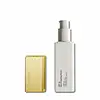What's inside
What's inside
 Key Ingredients
Key Ingredients

 Benefits
Benefits

 Concerns
Concerns

 Ingredients Side-by-side
Ingredients Side-by-side

Water
Skin ConditioningHomosalate
Skin ConditioningOctocrylene
UV AbsorberButyloctyl Salicylate
Skin ConditioningDimethicone
EmollientNeopentyl Glycol Diheptanoate
EmollientEthylhexyl Salicylate
UV AbsorberButyl Methoxydibenzoylmethane
UV AbsorberTrihydroxystearin
Skin ConditioningButylene Glycol
HumectantCetyl PEG/PPG-10/1 Dimethicone
EmulsifyingHexyl Laurate
EmollientPolyglyceryl-4 Isostearate
EmulsifyingPentylene Glycol
Skin ConditioningHonokiol
AntioxidantXanthan Gum
EmulsifyingWater, Homosalate, Octocrylene, Butyloctyl Salicylate, Dimethicone, Neopentyl Glycol Diheptanoate, Ethylhexyl Salicylate, Butyl Methoxydibenzoylmethane, Trihydroxystearin, Butylene Glycol, Cetyl PEG/PPG-10/1 Dimethicone, Hexyl Laurate, Polyglyceryl-4 Isostearate, Pentylene Glycol, Honokiol, Xanthan Gum
Isododecane
EmollientEthylhexyl Methoxycinnamate 6%
UV AbsorberDimethicone/Vinyl Dimethicone Crosspolymer
Skin ConditioningButyloctyl Salicylate
Skin ConditioningHomosalate 4%
Skin ConditioningEthylhexyl Salicylate 4%
UV AbsorberButyl Methoxydibenzoylmethane 2%
UV AbsorberPolysilicone-11
Bisabolol
MaskingCoffea Arabica Seed Extract
MaskingGlycyrrhiza Glabra Root Extract
BleachingChamomilla Recutita Flower Extract
MaskingRetinyl Palmitate
Skin ConditioningAloe Barbadensis Leaf Extract
EmollientCalluna Vulgaris Flower Extract
Skin ConditioningCamellia Sinensis Leaf Extract
AntimicrobialChlorella Vulgaris Extract
Skin ConditioningCaprylic/Capric Triglyceride
MaskingPhysalis Angulata Extract
Skin ProtectingPyrus Malus Fruit Extract
Skin ConditioningDiethylhexyl Syringylidenemalonate
Skin ProtectingIsododecane, Ethylhexyl Methoxycinnamate 6%, Dimethicone/Vinyl Dimethicone Crosspolymer, Butyloctyl Salicylate, Homosalate 4%, Ethylhexyl Salicylate 4%, Butyl Methoxydibenzoylmethane 2%, Polysilicone-11, Bisabolol, Coffea Arabica Seed Extract, Glycyrrhiza Glabra Root Extract, Chamomilla Recutita Flower Extract, Retinyl Palmitate, Aloe Barbadensis Leaf Extract, Calluna Vulgaris Flower Extract, Camellia Sinensis Leaf Extract, Chlorella Vulgaris Extract, Caprylic/Capric Triglyceride, Physalis Angulata Extract, Pyrus Malus Fruit Extract, Diethylhexyl Syringylidenemalonate
Ingredients Explained
These ingredients are found in both products.
Ingredients higher up in an ingredient list are typically present in a larger amount.
Also known as Avobenzone, this ingredient is a chemical sunscreen filter that provides protection in the UV-A range.
Avobenzone is globally approved and is the most commonly used UV-A filter in the world.
Studies have found that avobenzone becomes ineffective when exposed to UV light (it is not photostable; meaning that it breaks down in sunlight). Because of this, formulations that include avobenzone will usually contain stabilizers such as octocrylene.
However, some modern formulations (looking at you, EU!) are able to stabilize avobenzone by coating the molecules.
Avobenzone does not protect against the UV-B range, so it's important to check that the sunscreen you're using contains other UV filters that do!
The highest concentration of avobenzone permitted is 3% in the US, and 5% in the EU.
Learn more about Butyl MethoxydibenzoylmethaneButyloctyl Salicylate is a chemical UV filter structurally similar to octisalate. It is a photostabilizer, SPF booster, emollient and solvent. This ingredient helps evenly spread out ingredients.
According to a manufacturer, it is suitable for pairing with micro Titanium Dioxide, Zinc Oxide, and pigments.
Photostabilizers help stabilize UV-filters and prevents them from degrading quickly.
Learn more about Butyloctyl SalicylateEthylhexyl Salicylate is an organic compound used to block UV rays. It primarily absorbs UVB rays but offers a small amount of UVA protection as well.
Commonly found in sunscreens, Ethylhexyl Salicylate is created from salicylic acid and 2-ethylhexanol. You might know salicylic acid as the effective acne fighter ingredient and BHA.
The ethylhexanol in this ingredient is a fatty alcohol and helps hydrate your skin, similar to oils. It is an emollient, which means it traps moisture into the skin.
According to manufacturers, Ethylhexyl Salicylate absorbs UV wavelength of 295-315 nm, with a peak absorption at 307-310 nm. UVA rays are linked to long term skin damage, such as hyperpigmentation. UVB rays emit more energy and are capable of damaging our DNA. UVB rays cause sunburn.
Learn more about Ethylhexyl SalicylateHomosalate is a chemical sunscreen filter that provides protection in the UV-B range (280nm - 320 nm), with a peak protection at 306 nm. It is internationally approved for use in sunscreens.
Homosalate is not photo-stable, meaning it's strength as a UV filter degrades over time with exposure to the sun. Because of this, it's often used in combination with other chemical sunscreen filters as avobenzone (which protects from the UV-A range). Homosalate also helps act as a solvent for harder-to-dissolve UV filters.
(Part of the reason that sunscreens need to be frequently re-applied is due to the photo instability of many chemical sunscreen filters)
Currently, homosalate is approved in concentrations up to 10% in the EU and 15% in the US. The FDA is currently doing further research on the effects of homosalate, and it is possible that these approved concentrations will change in the future.
Learn more about Homosalate